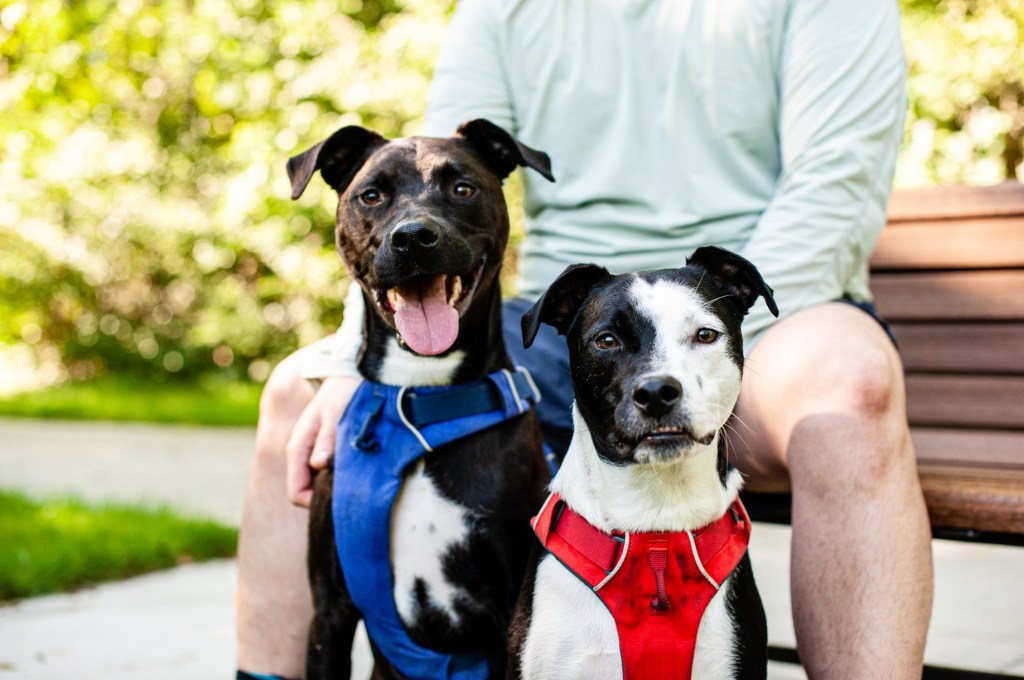Last week, I wrote about the importance of consent when it comes to interacting with dogs we don’t know.
To carry on with that theme, many pet owners are now accessorizing their dog companions with color-coded collars, harnesses and bandanas to help guide strangers in how to safely approach (or not approach) their dog.
Most progressive animal shelters with foster programs will outfit their adoptable dogs with collars that help strangers understand the best way to interact.
For example, Pasadena Humane has a wonderful “Foster Field Trip” program where volunteers can pick up a shelter dog and take them on an outing for a few hours.
Some volunteers will take a dog to the park or maybe on a hike. But they can also just hang out at a cafe, on the couch, or take a walk in the neighborhood. No matter the outing, it’s a much needed break from the stress of being in the shelter.
Studies have shown that even brief periods of time outside of the shelter can reduce cortisol levels (the stress hormone) for days or weeks after.
Whether it’s an adoptable shelter dog out for a foster field trip or one of your neighbors out for a stroll with their pup, it’s important to know what colored collars represent so that if you have an up-close interaction, you’ll know the best way to behave.
Red means “Caution! I need my space!”
When you see a dog wearing a red collar, it’s best to keep your distance. Not because that dog necessarily has anger management issues or wants to tear your leg off if you approach. It simply means that dog may take time to warm up to strangers, so invading their space may lead to a fight or flight reaction.
My dog Madeline fell into the red collar category. She was a low to the ground bundle of nerves who, with the exception of me, didn’t really care for people or other dogs.
So when strangers approached while out on a walk, it was a gamble whether she’d cower and hide or strike like an angry serpent at your ankles.
Since…
Read the full article here







